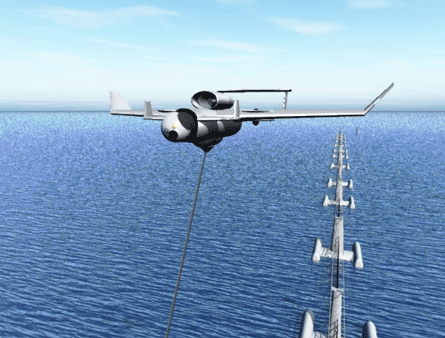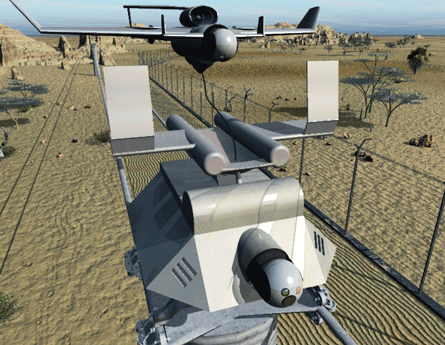Israeli-start up company Planum Vision has unveiled concepts for a combined ground and air surveillance system for fixed perimeters that uses a tow tether to provide electric power to an unmanned air vehicle.
The proposed system would comprise an overhead rail mounted unmanned "train" which runs on electric cables mounted on towers, with this launching and recovering the UAV.

The UAV would also be capable of untethering and flying freely using battery power to examine targets of interest beyond the immediate perimeter region or to alter revisit times for sections of the line. The company is proposing options for a canard delta wing air vehicle with ducted fans embedded in the wings to allow for vertical take off and landing in free flight modes, or an airship.
According to Planum Vision president Ofer Rubin the use of uninterrupted electric energy along the rail network provides a solution to achieving extended and continuous operations by unmanned ground and air vehicles: "The system allows a 24h potential operational functioning."

The system would be scaleable, with additional track roll-out used to expand the surveillance area as required. Over water operation would be achieved by anchoring pylon towers to the seafloor.
The sequencing of “trains” and their associated UAVs along the rails would be staggered at irregular intervals to make the system unpredictable to potential intruders. Multiple trains along the rails could also allow for constantly overlapping surveillance footprints between UAV segments, while the towers themselves could also be equipped with sensors.
The cost of building the tower and track network would be well below that of acquiring and operating a “dynamic UAV fleet” over time says the company. It could also be integrated into existing fixed perimeter infrastructure as an additional overlay.

Source: FlightGlobal.com
















